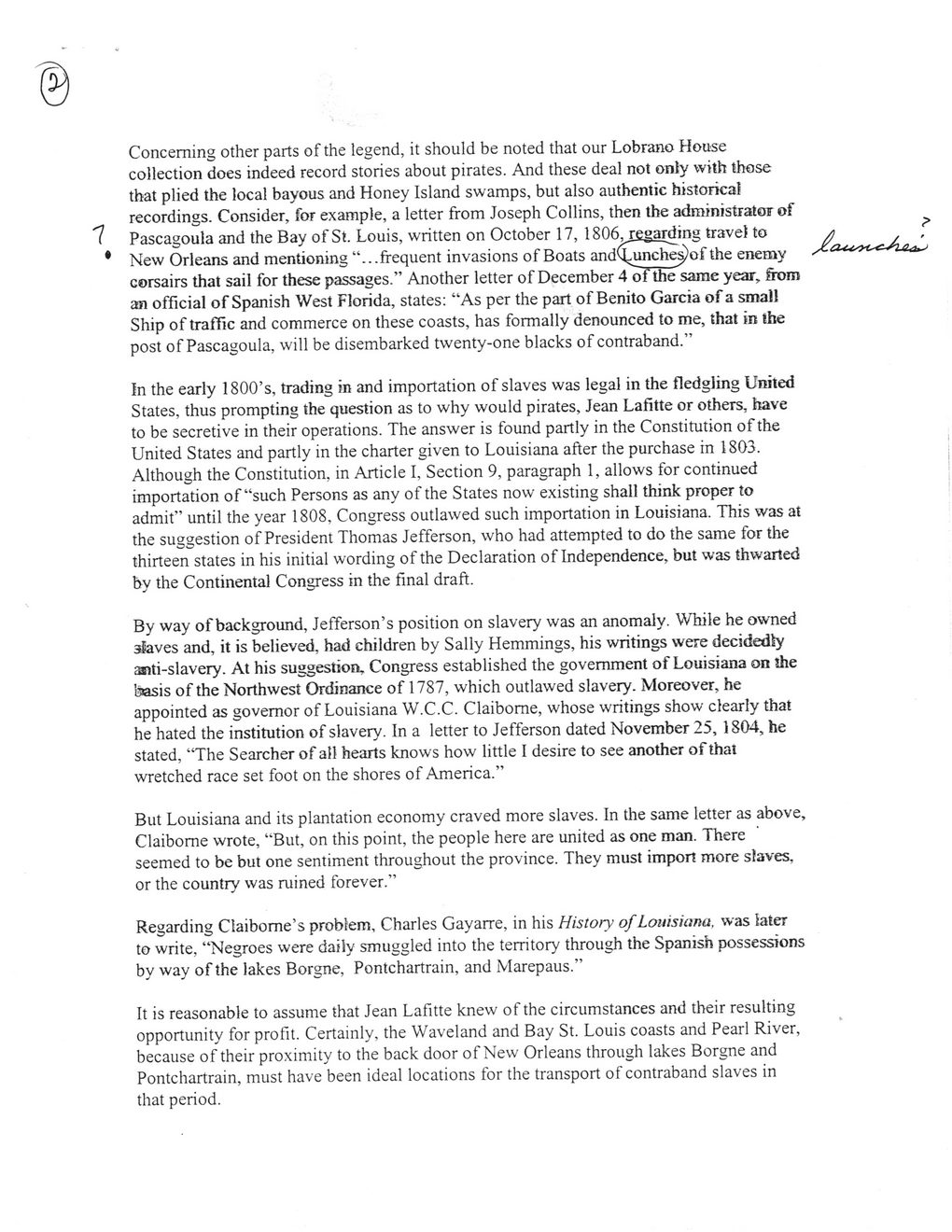This text was obtained via automated optical character recognition.
It has not been edited and may therefore contain several errors.
Concerning other parts of the legend, it should be noted that our Lobrano House collection does indeed record stories about pirates. And these deal not only with those that plied the local bayous and Honey Island swamps, but also authentic historical recordings. Consider, for example, a letter from Joseph Collins, then the administrator of 7 Pascagoula and the Bay of St. Louis, written on October 17, 1806. regarding travel to * New Orleans and mentioning .frequent invasions of Boats andQ_unches)of the enemy corsairs that sail for these passages.” Another letter of December 4 of the same year, from asi official of Spanish West Florida, states: “As per the part of Benito Garcia of a small Ship of traffic and commerce on these coasts, has formally denounced to me, that in Ihe post of Pascagoula, will be disembarked twenty-one blacks of contraband.” In the early 1800’s, trading in and importation of slaves was legal in the fledgling United States, thus prompting the question as to why would pirates, Jean Lafitte or others, have to be secretive in their operations. The answer is found partly in the Constitution of the United States and partly in the charter given to Louisiana after the purchase in 1803. Although the Constitution, in Article I, Section 9, paragraph 1, allows for continued importation of “such Persons as any of the States now existing shall think proper to admit” until the year 1808, Congress outlawed such importation in Louisiana. This was at the suggestion of President Thomas Jefferson, who had attempted to do the same for the thirteen states in his initial wording of the Declaration of Independence, but was thwarted by the Continental Congress in the final draft. By way of background, Jefferson’s position on slavery was an anomaly. While he owned slaves and, it is believed, had children by Sally Hemmings, his writings were decidedly anti-slavery. At his suggestion, Congress established the government of Louisiana on the basis of the Northwest Ordinance of 1787, which outlawed slavery. Moreover, he appointed as governor of Louisiana W.C.C. Claiborne, whose writings show clearly that he hated the institution of slavery. In a letter to Jefferson dated November 25, 1804, he stated, “The Searcher of all hearts knows how little I desire to see another of that wretched race set foot on the shores of America.” But Louisiana and its plantation economy craved more slaves. In the same letter as above, Claiborne wrote, “But, on this point, the people here are united as one man. There seemed to be but one sentiment throughout the province. They must import more slaves, or the country was ruined forever.” Regarding Claiborne’s problem, Charles Gayarre, in his History of Louisiana, was later to write, “Negroes were daily smuggled into the territory through the Spanish possessions by way of the lakes Borgne, Pontchartrain, and Marepaus.” It is reasonable to assume that Jean Lafitte knew of the circumstances and their resulting opportunity for profit. Certainly, the Waveland and Bay St. Louis coasts and Pearl River, because of their proximity to the back door of New Orleans through lakes Borgne and Pontchartrain, must have been ideal locations for the transport of contraband slaves in that period.

Pirate House Document (056)